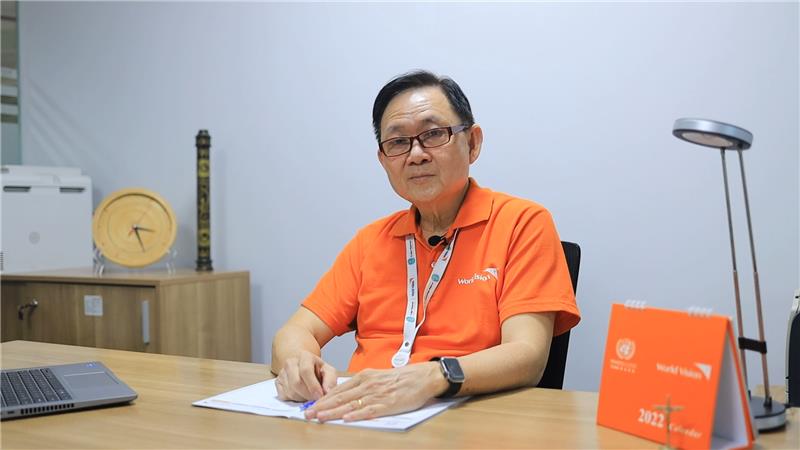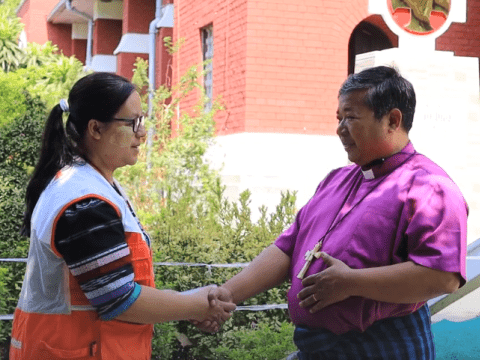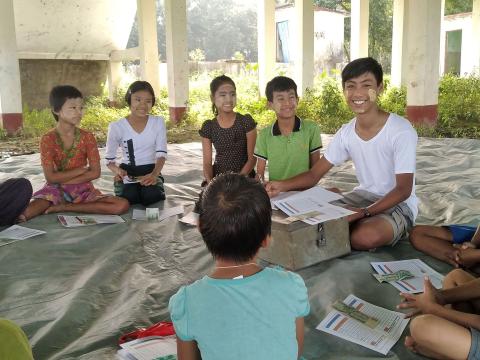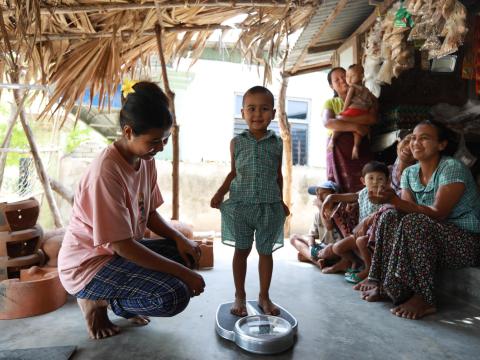
Is SDG 2 - Zero Hunger still within Myanmar’s reach?
Dr Kyi reflects on how Myanmar’s fight against hunger, amid earthquakes, conflict, and economic crisis seems daunting—but not impossible. Hope can still grow in the midst of crisis. A hunger-free world is possible for the children in Myanmar but that will require a united commitment to peace and resilience, and global solidarity.
When a 7.7-magnitude earthquake struck central Myanmar on March 28, 2025, I travelled to the epicentre in the Mandalay region. There, I saw children waiting silently in long queues for a simple meal—many hadn’t eaten all day. Their eyes reflected fear and uncertainty.
The powerful Central Myanmar earthquake shook the ground beneath our feet but also the already fragile foundations of our food and nutrition systems. This isn’t a scene from a dystopian film. This is Myanmar’s hunger crisis—real, urgent, and deepening.
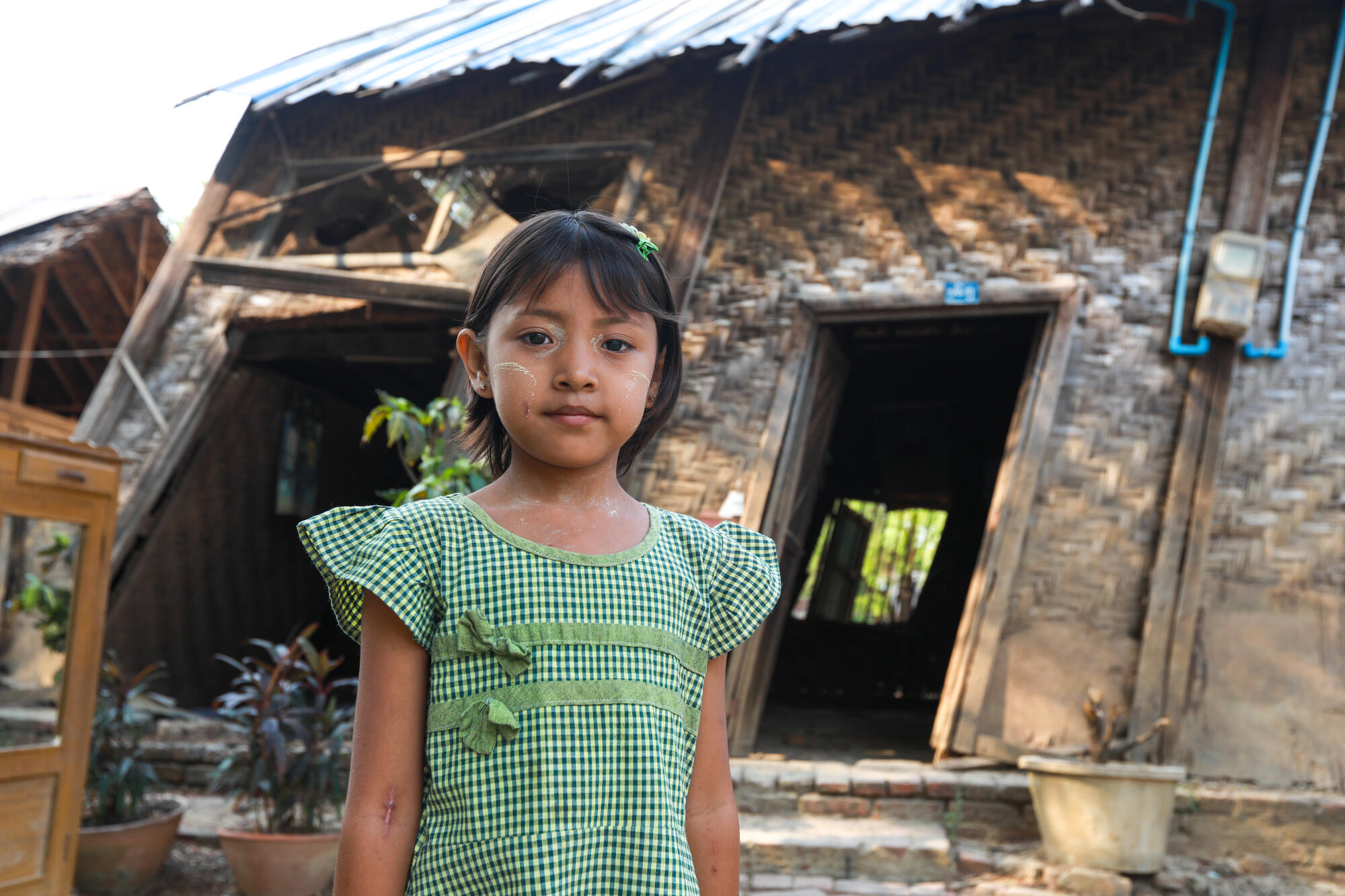
A Crisis Within a Crisis
Despite multiple organisations working towards building long-term, sustainable solutions for food security, Myanmar’s path to achieving Sustainable Development Goal 2: Zero Hunger has always been steep. Conflict, economic instability, climate shocks, and dwindling humanitarian funding have created a crisis within a crisis.
Since the escalation of violence in 2021 which further weakened essential services and food systems, the climb has grown steeper. In 2023, prices for basic goods rose by 29% and nutritious food became increasingly out of reach, in conflict-affected areas like Rakhine. The Super Typhoon Yagi that followed in 2024 further disrupted access to food and livelihoods.
Before the 28th March earthquake, over 15 million people —more than a quarter of the population—were expected to face food insecurity in 2025. Nearly 20 million (1 in 3) will require humanitarian assistance, including 6.3 million children and 7.1 million women.
The Global Hunger Index reveals alarming trends:
- 1 in 4 children under five is stunted
- 6.6% suffer from wasting
- 4% die before age five, often due to malnutrition-related illnesses
The Impact of the Earthquake
The March 28 earthquake further destabilised Myanmar’s fragile food systems; another massive blow for the most vulnerable segments of society like children, pregnant women and rural communities. Irrigation systems collapsed, farmland was damaged, livestock perished, and health services were disrupted. Clean water and sanitation systems failed in many areas, compounding the risk of disease and malnutrition, especially for displaced families and children.
More than 17 million people across 57 townships were affected. Even regions untouched by the quake felt the ripple effects, placing additional pressure on already overstretched systems, particularly in remote and conflict-affected communities.
Relief Is Not Enough
Emergency response has saved lives. Thanks to international support, World Vision and its partners like UN agencies, local volunteers, have reached nearly 330,000 people including over 100,000 children —providing food, clean water, and shelter. Cash assistance, including multipurpose transfers, in partnership with World Food Programme (WFP), and recovery loans through VisionFund, has helped families meet immediate needs and begin restoring livelihoods.
But relief, however essential, is not enough. If we stop at this stage, we risk trapping millions in a cycle of dependency, insecurity and repeated crisis.
From Relief to Recovery
Post-earthquake reconstruction must not be limited to restoring what was lost.
It must build a foundation that is more strategic, robust, inclusive, and sustainable than what existed before. At the same time, be community-led:
- Cash-for-work programmes can support community projects like debris removal or repair small-scale food infrastructure like wells and market spaces while providing income.
- Sustainable livelihoods through resilience programmes (especially for families who rely on agriculture) like home gardening, livestock rearing, food processing and strengthening agricultural value chains must be prioritised.
- Low-cost housing reconstruction is essential to protect lives and livelihoods.
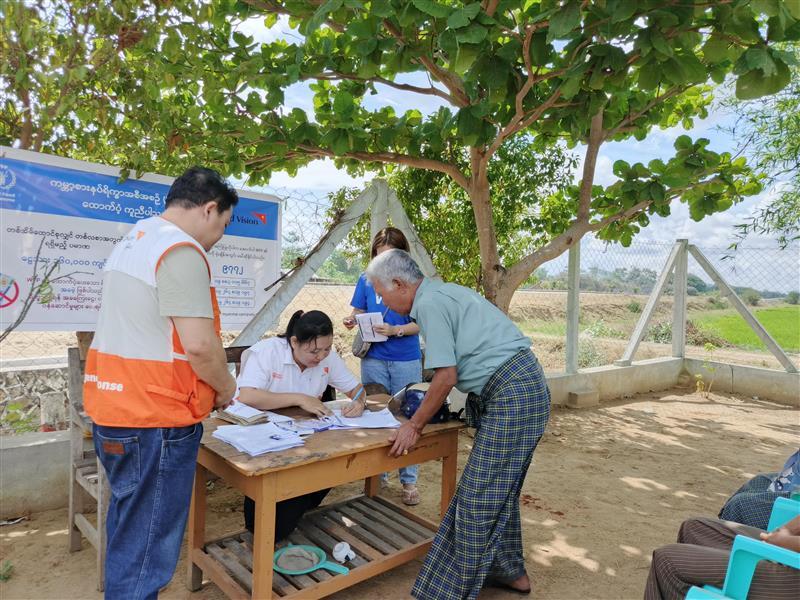
World Vision campaigns like ENOUGH, which aim to end child hunger and malnutrition, can be a key part of the recovery strategy. In Myanmar, the campaign has an integrated approach to tackle food insecurity that includes nutrition education, breastfeeding support, and community-based feeding programmes. These efforts, in collaboration with partners like WFP, local faith leaders, youth etc., aim to build long-term, locally owned solutions that ensure children grow nourished and healthy.
Hope Amidst Adversity
Despite the challenges, hope persists. I’ve seen families cook extra meals for neighbours, women launch food stalls to get extra income, and youth volunteer to rebuild their communities. These acts of resilience are the seeds of a better future.
But seeds need support to grow.
Institutional donors—governments, development banks, and multilateral agencies—have a critical role to play. By aligning investments with locally led recovery plans, strengthening national systems, and staying committed beyond the emergency phase, donors can catalyse transformation.
World Vision, for example, is embedding disaster preparedness and risk reduction into all its area programming. We continue to invest in anticipatory action, disaster mitigation, and strengthening community resilience.
Our approach integrates disaster management into broader development goals. We view communities not merely as recipients of aid, but as partners with agency, insight, and resilience of their own. Every dollar invested in early recovery and resilience today reduces the cost and human toll of the next crisis.
The Triple Nexus: A Path Forward
In contexts like Myanmar that has systemic fragility and ongoing conflict, the hunger crisis cannot be solved by humanitarian aid alone. We must adopt a triple nexus approach—integrating humanitarian response, development, and peacebuilding; simultaneously, rather than sequentially.
Peace is essential to building lasting food systems. But we cannot wait for peace to begin building.
Civil society has a vital role in fostering social cohesion and peacebuilding, At World Vision, we equip children and communities with skills rooted in love, reconciliation, and peace—essential tools for resilience in fragile contexts.

Now Is the Time
Myanmar’s road to Zero Hunger is daunting but not out of reach. Because hunger is not just a symptom of crisis—it’s a test of our collective will to act. Coordinated action, empowered communities, and a firm commitment to peace and resilience, can help Myanmar overcome these setbacks. With strategic investment and long-term vision, institutional donors can help Myanmar not only recover but emerge stronger, more equitable and more resilient.
About the Author:
Dr. Kyi Minn is the National Director of World Vision International in Myanmar. As National Director, he provides strategic leadership to design and implement programmes that advance the field office’s mission to improve the well-being of children. He is also a public health expert with over 30 years of experience in global health and senior management across the Asia-Pacific region, specialising in communicable diseases and health challenges in fragile contexts.
